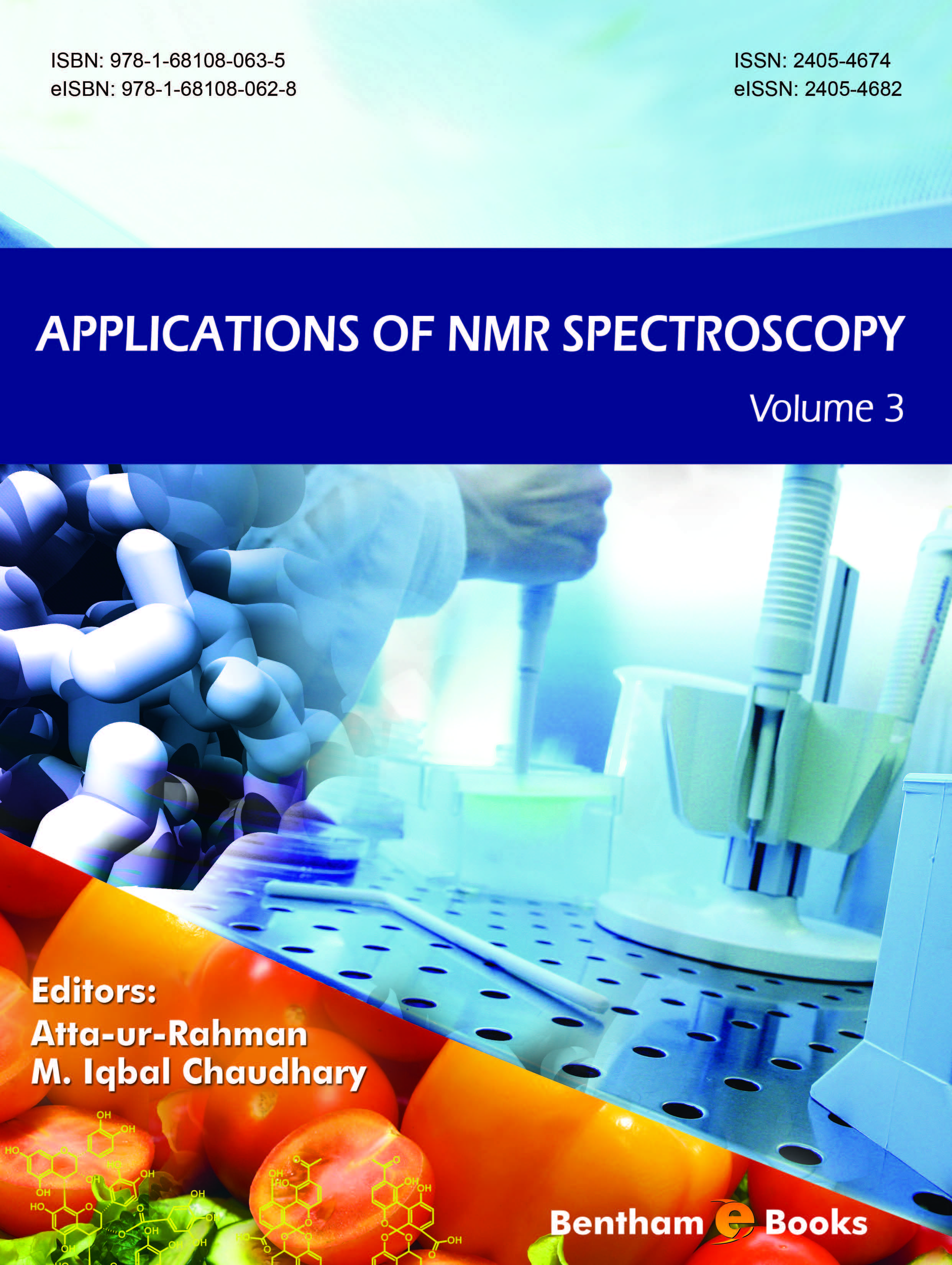Modern NMR spectroscopy continues to contribute in many disciplines of scientific research,
including chemical and biochemical sciences, structural biology, food and nutrition,
metabolomics, analytical sciences, and in various other fields. In addition, NMR provides
unique information about intra- and inter-molecular interactions, conformational changes and
stereochemistry of molecules. This information is critical in the understanding of the
structure-activity relationships of chemical compounds, as well as the molecular behaviors in
diverse conditions.
Volume 3 of the book series entitled Applications of NMR Spectroscopy is aimed to update
the readers about emerging, diverse and exotic applications of NMR spectroscopy in various
disciplines. The book is based on six well written reviews, each focussing on an important
area of application of NMR spectroscopy. In each of these articles, the optimum use of this
powerful technique with reference to the particular field is introduced in an easy-to -
understand manner. The real strength of the book is its highly practical approach in describing
both the concepts and applications of NMR spectroscopy for a specific purpose.
The chapter contributed by Serrai et al. provides a critical commentary of the literature
published on the use of NMR spectroscopy and NMR imaging in breast cancer diagnosis.
Breast cancer is a major killer of women in both developed and developing worlds, with
increasing prevalence. The high mortality is largely associated with late diagnosis, and the
absence of breast cancer screening programs. Much attention is being given to develop
techniques which help in precise and early diagnosis and prognosis of breast cancer. NMR
techniques have been used successfully in identifying various biomarkers associated with
different stages of breast cancer progression. The current capabilities of NMR techniques,
including the use of HR MAS-NMR (high resolution magic angle spinning), in breast cancer
research are comprehensively discussed in this chapter
Xu et al. review the use of NMR spectroscopy in characterization and measurement of
polyphenols in various foods and dietary agents, such as cocoa, grape, tea, and wine.
Polyphenols belong to a large class of plant secondary metabolites, associated with numerous
health benefits including anti-oxidant, anti-ageing, and anti-inflammatory properties.
Anthocyanins, proanthocyanins, xanthones and flavonoids are members of the polyphenol
class. NMR spectroscopy has been extensively used to elucidate the structures of
polyphenolic compounds. Various NMR techniques have also been extensively used for the
detection of polyphonic compounds in complex food matrices as well as in metabolomic
studies. Thus NMR spectroscopy has emerged as a key tool for quality control and assurance
in food and nutrition industries.
The chapter by Lane et al. describes various key developments in NMR spectroscopy with
reference to its applications in natural product-based drug discovery and development.
Natural products despite their pivotal role in drug discovery, are often associated with numerous practical challenges, including complex chemical structures, very low quantities,
existence in complex mixtures, etc. Recent developments in NMR hardware (such as various
types of probeheads, capillary-probe, cryogenically cooled probes, LC-NMR, GC-NMR, etc)
and innovative pulse sequences (HMQC, HSQC, HMBC, NOE, ROESY,DOSY, etc) are
capable of addressing most of these problems.
Fluorine (19F) is an important substituent in medicinal chemistry as it increases the
bioavailability and pharmacokinetic profile of drugs. 19F-NMR spectroscopy is extensively
used in various fields of biomedical research, including structure determination of fluorinated
proteins. Dorai has reviewed the recent literature about the applications of novel 19F-NMR
techniques in the determination of conformation, folding, and molecular dynamics of 19Flabeled
proteins, including membrane proteins.
Jackson-Ayotunde et al. critically review various NMR spectroscopic methods used in
structure determination of enaminone class of organic compounds. Enaminones are important
pharmacophores, known for various biological activities including anti-convulsant properties.
The authors have demonstrated the combined use of molecular docking methods and NMR
techniques in the determination of structures and inter-molecular interactions in various
derivatives of the enaminone class of compounds.
Inter- and intra-molecular interactions play key roles in defining the molecular architecture,
stability, molecular recognition, and physical and biological properties of organic and bioorganic
molecules. NMR spectroscopy, with its ability to detect micro-electronic changes, is
an ideal technique for the study of inter- and intra-molecular interactions in small organic and
large biomolecules. Tasic et al. have contributed a well referenced article about the use of
various NMR techniques in the study of molecular environments. They have presented
various examples of such applications in ligand-receptor interactions in drug discovery,
metabolmic studies, drug formulations, etc.
We would like to express our gratitude to all the eminent contributors for their excellent
contributions and for timely completion of the writing assignments. The entire team of the
Bentham Science Publishers, particularly Ms. Fariya Zulfiqar (Assistant Manager
Publication), Mr. Shehzad Naqvi (Senior Manager Publication) and team leader Mr.
Mahmood Alam (Director Publications) deserves our deepest appreciation for putting together
an excellent treatise of well written articles in an efficient manner. We are confident that the
book will receive wide appreciation both from students as well as from professionals.
Atta-ur-Rahman, FRS
Kings College
University of Cambridge
Cambridge
UK
&
M. Iqbal Choudhary
H.E.J. Research Institute of Chemistry
International Center for Chemical and Biological Sciences
University of Karachi
Karachi
Pakistan

